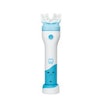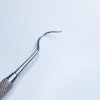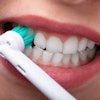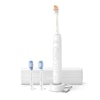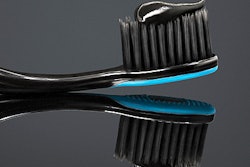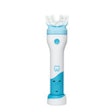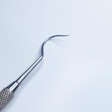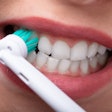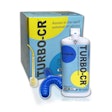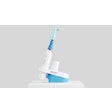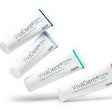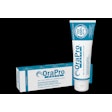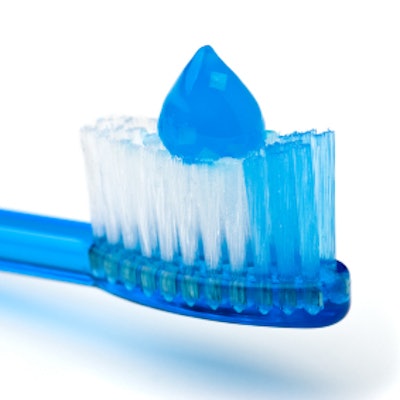
Standard dental care calls for twice-daily toothbrushing with a fluoride toothpaste or dentifrice, but it remains unclear if these substances contribute to toothbrushing's effectiveness at inhibiting plaque regrowth. To learn more, researchers reviewed and analyzed the published evidence.
To isolate the potential benefits of dentifrice from those of toothbrushing, they searched for studies that evaluated the effects on plaque regrowth of using a fluoride dentifrice slurry compared with water or saline during a four-day nonbrushing period. The results provided moderate-quality evidence that daily dentiifrice use has a weak inhibitory effect on plaque regrowth. Their review was published in the International Journal of Dental Hygiene (August 31, 2018).
"This review demonstrates that toothpaste contributes to a reduction of plaque regrowth," lead author Dr. Cees Valkenburg, told DrBicuspid.com. Dr. Valkenburg is a general dentist and clinical epidemiologist in Hoevelaken, the Netherlands.
Slowing plaque regrowth
Published studies suggest that dentifrice does not improve the mechanical action of brushing on plaque removal, but it remains unclear whether it reduces plaque regrowth between brushing, the review authors noted. Evaluating the effectiveness of dentifrice in addition to toothbrushing is complicated by the variability of toothbrushing efficacy, they wrote.
However, delivering dentifrice via a slurry in mouthwash form can allow for the study of dentifrice independent of toothbrushing. The plaque-reducing ability of dentifrice can be examined using the four-day nonbrushing model in which participants undergo plaque removal via professional teeth cleaning followed by a four-day period when they only use the slurry and don't brush their teeth, the authors explained.
They conducted a systematic review of published studies that assessed the effectiveness of dentifrice intended for daily use in a slurry form compared with water or saline only using a four-day nonbrushing plaque regrowth model in healthy noninstitutionalized adults. They included only randomized controlled clinical trials or controlled clinical trials in which participants did not have systemic disorders, orthodontic appliances, or removable prostheses.
The review authors conducted meta-analyses on the eight studies they ultimately included and assessed their methodological qualities. They estimated the potential risk of bias as low for all included studies. Two studies mentioned support and assistance from industry (Colgate-Palmolive and Procter & Gamble), and the authors of three studies reported affiliations with industry (Procter & Gamble).
Participants in the studies underwent professional prophylaxis to removal all plaque, stains, and calculus at baseline. All the studies had a crossover design, with a washout period between treatments of three to 10 days.
The dentifrices used varied in composition and concentration of ingredients, and they were marketed under a variety brands, with two noncommercial brands used in one study. Four studies required participants to rinse under supervision. Rinsing time was one minute in all studies except for one, which called for 30 seconds of rinsing with water, following by 30 seconds of rinsing with a dentifrice slurry.
The studies contained 25 comparisons between rinsing with a dentifrice slurry or with water or saline. Of these, 22 comparisons demonstrated a significant difference between interventions that favored the use of a dentifrice slurry, and three comparisons indicated no difference.
The review authors also analyzed studies based on the plaque index and dentifrice ingredient used, performing meta-analysis on 24 comparisons involving 98 participants and 329 experiments. They found all but one of these analyses statistically significant in favor of the dentifrice slurry compared with saline or water, leading them to conclude that nearly all of the dentifrices used in the included studies appeared to significantly inhibit plaque regrowth compared with water or saline.
Products containing triclosan demonstrated the greatest inhibition of plaque regrowth, and those containing sodium fluoride or monofluorophosphate also significantly inhibited plaque regrowth, they noted.
"Small reductions in plaque regrowth may reduce gingivitis and caries to a certain extent," the authors wrote.
Inhibition limitations
Despite these results, the authors cited some limitations of their research, which included the following:
- The composition of dentifrice in the included studies was often unclear.
- More than half of the studies were published two or more decades ago.
- The reporting in the studies did not follow current standards.
- Plaque inhibition may be greater in populations with higher plaque levels than those included in the studies.
- Blinding is problematic between slurry and water.
Dr. Valkenburg and his colleagues are continuing to study dentifrice and have conducted a review of research on dentifrice containing baking soda, which showed promising results regarding its benefits. In the meantime, the results of the current review support the regular use of dentifrice during toothbrushing.
"Although dentifrice does not contribute to the mechanical plaque removing efficacy, the addition of dentifrice enhances the lasting effect of toothbrushing," the authors concluded. "Active plaque-inhibiting ingredients support the daily use of a regular dentifrice."
